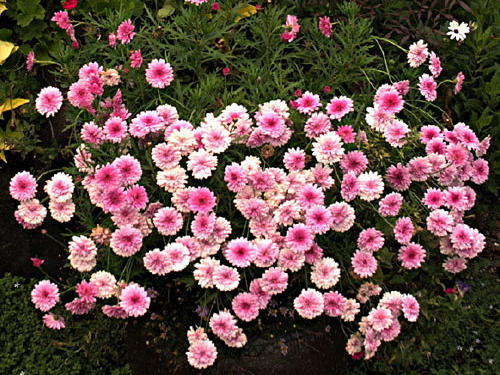
Chrysanthemum x grandiflorum
Florists’ Chrysanthemum Asteraceae (Compositae) Perennials, Flowers

Chrysanthemum x grandiflorum
Beloved for late summer and fall bloom,Chrysanthemum once included around 160 species, but taxonomists have moved the vast majority to other genera.
Chrysanthemums bred for the cut-flower industry, for forcing in pots (and sold in bloom every day of the year), and for exhibition are primarily florists’ chrysanthemums. Some of these also make good garden subjects, as do all C. weyrichii and C. zawadskii selections. You may also find excellent hybrids between C. zawadskii and C.x grandiflorum called rubellums.
